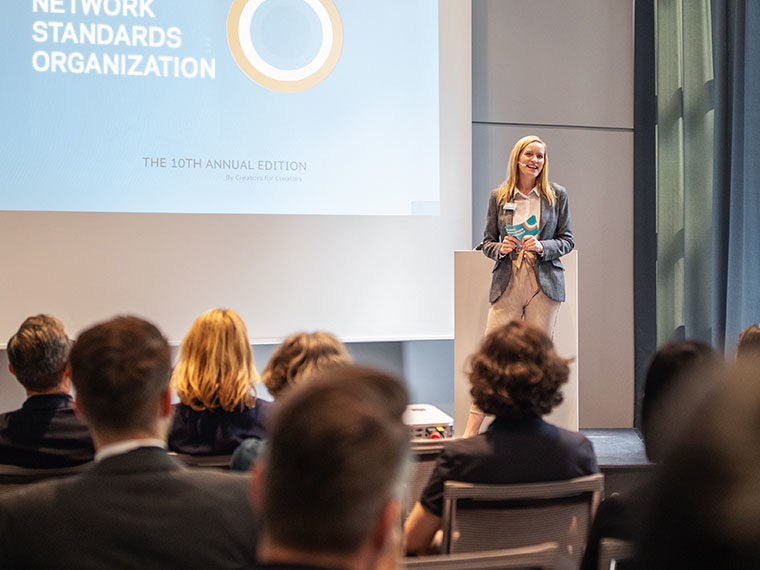Skewness, measuring the range of biases, strongly suggests rate moves
The options market on Treasury obligations allows investors to hedge their interest rate risk and to wager on which way rates might move. Taken together, all the trades on that market represent a range of perceptions — of risk — about future rates.
While the yield on a Treasury bond is, at any given moment, a fixed value, say 2%, investors’ option trades, in aggregate, will usually show a bias that rates are either more likely to fall or to rise. That is, the probability distribution for the future yield implied by all those individual options trades may lean more to the left or more to the right. If, for example, this distribution has a longer tail in the direction of falling rates, this suggests a collective belief that there is more downside risk, even by a slight margin, for interest rates going forward.
Opt In to the Review Monthly Email Update.
This leaning is known as “skewness” among those who study bond markets (the term is used more widely in the study of probabilities). And a working paper published by the National Bureau of Economic Research, by Universität Hamburg’s Michael D. Bauer and UCLA Anderson’s Mikhail Chernov, analyzing some 30 years of options market activity, suggests skewness is — among the many market measurements used in hopes of discerning future moves in interest rates — too little employed.
Opt In to the Review Monthly Email Update.
Investors and the Mood of the Market
Bauer and Chernov analyzed options trades from 1990 to 2021. The options data predicts a “substantial share,” they report, of changes in yields in the Treasury markets. “The COVID episode is a powerful illustration: Implied skewness signaled the increased downside risk to rates at the onset of the pandemic and then anticipated the steep rise in long-term Treasury yields starting in mid-2021.”
Investors have long relied on other measures to divine changes in interest rates or to gauge the “mood” of the market. These include:
- Volatility: Volatility is a measure of how drastically a price fluctuates over a given period of time. While it is useful to know how stable or unstable an investment is, it does not give the key information about the direction of price movements. When it comes to predicting asset prices or interest rates, the key information is not how much they’ll change, but in which direction.
- Employment growth: The Federal Reserve is tasked with maintaining stable prices and maximizing employment, so it keeps a close eye on employment growth as a gauge of where the economy is in the business cycle. A measure of the change in total nonfarm employment exhibits some predictive power for interest rate changes.
- Surveys and forecasts: Investors often rely on the wisdom (or folly) of their peers, by following regular surveys of economists, bankers, and other market watchers, such as the Blue Chip Financial Forecasts. The authors find that skewness strongly predicts errors in the BCFF, suggesting that skewness — being a direct measure of how people are betting on interest rates movements — can do a better job predicting which way rates will move than a survey.
- The yield curve: When the yields on Treasuries of different maturities (one-year, five-year, 10-year) are plotted on a graph, the line that connects them is known as the “yield curve.” In normal times, it slopes upward, indicating that investors demand higher yields for securities that mature far off in the future. When it inverts and starts to slope downward, investors take that as a sign of recession to come. A high slope (a steep yield curve) is known to predict falling long-term yields and high bond returns.
Even when the authors control for these other measures, skewness retains its predictive power. And using skewness in combination with these other predictive measures can enhance their overall performance in forecasting. “Skewness is particularly informative about future bond returns when considered jointly with the yield curve,” they note.
Skewness Beats Slope When it Comes to the Yield Curve
And when skewness and the slope of the yield curve send conflicting messages, skewness tends to be more accurate in its predictive power, Bauer and Chernov report. For example, both in early 2019 and in late 2020, the yield curve’s shape predicted an imminent rise in interest rates. Skewness suggested the opposite — a drop in yields — in 2019, which turned out to be correct, the authors note.
The opposite happened during 2020. In the middle of the year, skewness rose suddenly and substantially, even as the yield curve remained unchanged. This sudden rise in skewness, the authors note, correctly anticipated a rise in long-term yields from 0.5% to 1.5%. The rise in long-term yields caught market observers by surprise. Had investors been monitoring skewness, they would have noticed it “rising in advance of the rise in yields.”
Bauer and Chernov find similarly striking behavior between 2009 and 2014, when the Federal Reserve held interest rates near zero. Skewness was higher than normal throughout this period. As Chernov explained, “In the U.S., people believed that interest rates will not become negative, so the belief was we’ll have more positive outcomes,” in the form of rate increases.
“We’re almost saying, don’t even bother looking at volatility,” Chernov continued. “Just focus on skewness. It contains a lot of useful information.”
Featured Faculty
-
Mikhail Chernov
Professor of Finance; Warren C. Cordner Chair in Money and Financial Markets; Director, Master of Financial Engineering Program
About the Research
Bauer, M., Chernov, M. (2021). Interest Rate Skewness and Biased Beliefs. doi: 10.3386/w28954






